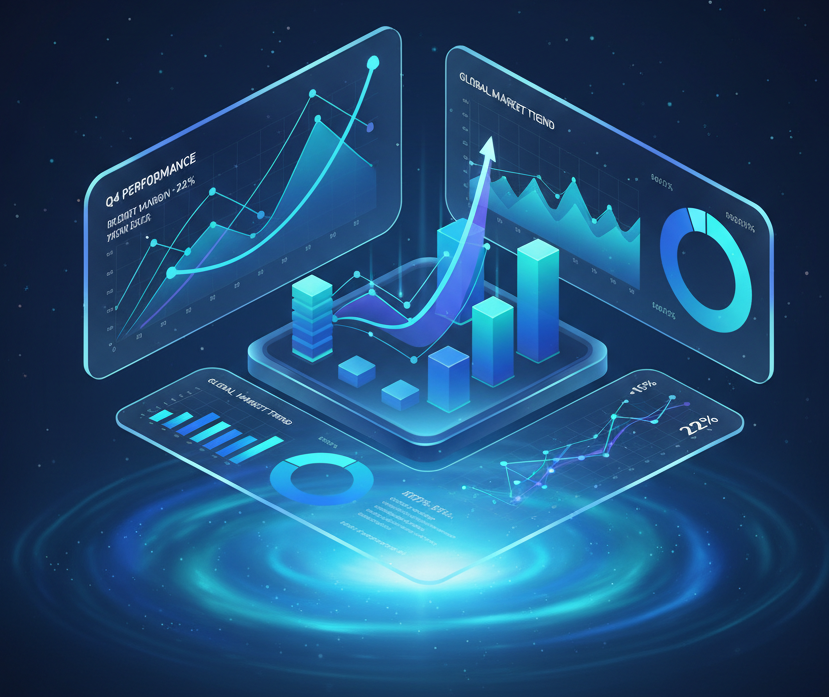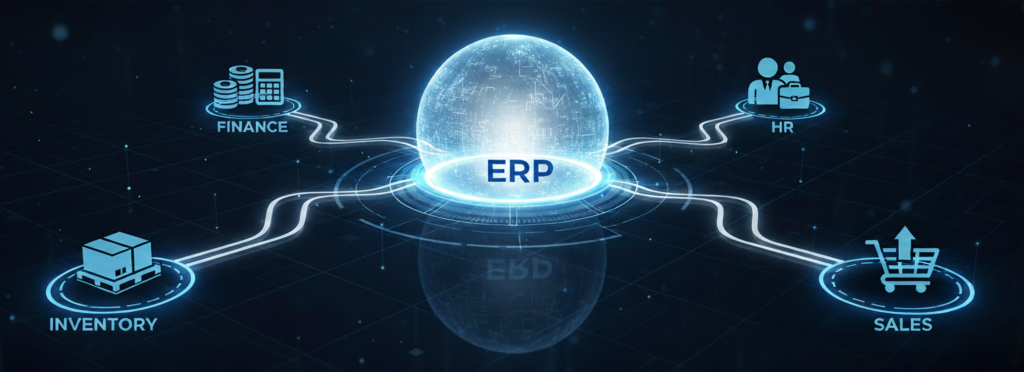“You can’t manage what you can’t measure.” — Peter Drucker
If your NetSuite data lives in silos and your reports are still stuck in spreadsheets, you’re not alone. Businesses today generate more data than ever before, but few know how to use it effectively. Power BI is the bridge that turns your NetSuite records into insights you can act on.
This guide will show you how to connect NetSuite to Power BI in 2025 using modern methods, real-time syncing, and no-code or low-code solutions. Whether you’re a finance manager, an analyst, or a NetSuite admin, you’ll learn how to:
- Combine finance, inventory, and CRM data into a single dashboard
- Choose between APIs, ETL tools, and direct queries
- Automate reporting and improve business decisions
Let’s explore how to make your data work for you.
1. Why Integrate NetSuite with Power BI?
Oracle NetSuite is widely used for managing finance, inventory, procurement, and CRM. Power BI is Microsoft’s analytics tool for building dashboards, reports, and predictive models. When these systems are integrated, businesses benefit from:
- Unified data from sales, finance, and operations
- Real-time insights via automated dashboards
- Better decision-making using historical and predictive trends
- Improved financial reporting, forecasting, and performance monitoring
Whether you’re managing cash flow or tracking multi-location inventory, integrating NetSuite with Power BI simplifies analytics and enhances visibility.
2. Integration Options in 2025
There’s no one-size-fits-all method. Choose based on your data size, team skill level, and budget.
| Method | Pros | Cons | Best For |
|---|---|---|---|
| Saved Search with Web Query (.iqy) | Simple and free | Manual refresh; limited scope | Small businesses, POCs |
| ODBC (SuiteAnalytics Connect) | SQL-style access, native to NetSuite | Requires extra license; setup is complex | Mid-sized companies with IT support |
| REST/SOAP API + Custom ETL | Full flexibility; scalable | Needs development and maintenance | Companies with tech teams |
| Third-party ETL Tools (e.g., Fivetran, Skyvia, Windsor.ai) | No-code setup; automatic updates | Subscription cost, vendor lock-in | Business analysts, growing teams |
| Data Warehouse Integration (BigQuery, Snowflake, Azure Synapse) | Scalable, multi-source capability | High setup cost; needs expertise | Enterprises or multi-system setups |
3. Setup: Common Integration Workflows
Option A: Saved Search + Web Query
- Create a Saved Search in NetSuite.
- Export it as a Web Query (.iqy).
- Copy the URL from the .iqy file.
- In Power BI: Get Data > Web > Paste URL.
- Configure refresh using a data gateway.
Note: This works well for static or small data but struggles with large, dynamic datasets.
Option B: SuiteAnalytics Connect (ODBC)
- Purchase the SuiteAnalytics Connect add-on.
- Install the ODBC driver and configure a DSN.
- In Power BI: Get Data > ODBC > Select DSN.
- Import tables and model them.
- Set up refresh via on-premises gateway.
Watch out: ODBC connections can be slow for large data models and require SQL optimization.
Option C: REST API with ETL or Custom Scripts
- Use NetSuite’s REST API to pull data.
- Write a custom script (e.g., Python) or use ETL tools.
- Load data into Power BI or a warehouse.
- Automate the job using cron or scheduling tools.
This method allows you to control schema, transformations, and refresh cycles.
Option D: No-code ETL Platforms
- Choose an ETL tool like Windsor.ai or Skyvia.
- Connect NetSuite using OAuth or token-based authentication.
- Choose a destination as Power BI or a warehouse.
- Set refresh intervals, apply filters, and map fields.
These platforms are ideal for non-developers and support auto-scaling and monitoring.
Option E: Full Data Warehouse Integration
- Use ETL to move data from NetSuite to BigQuery, Snowflake, or Azure.
- Transform and model data (e.g., using dbt).
- Connect Power BI to the warehouse.
- Schedule refreshes and create dashboards.
This architecture is the most scalable and supports cross-platform analytics.
4. What About Performance and Refreshes?
- Saved Search / Web Query: Manual or gateway-based refreshes; slower with large datasets.
- ODBC: Works with Power BI Pro and Premium; requires a gateway; slow if not optimized.
- REST API / ETL: Supports scheduled refreshes; performance depends on backend logic.
- Warehouse Model: Offers best performance using DirectQuery or cached models.
Tip: Always limit the fields and rows returned. Use filters and incremental loads wherever possible.
5. How Much Does It Cost?
| Component | Typical Cost (Monthly) |
|---|---|
| SuiteAnalytics Connect | ~$499 (NetSuite license) |
| Power BI Pro License | $10–$20/user |
| ETL Tools | $100–$500+ based on volume |
| Warehouse (BigQuery/Snowflake) | Pay-as-you-go (usage-based) |
Costs can add up, so evaluate your data needs, number of users, and refresh frequency.
6. Trends to Watch in 2025
- AI-Powered Analytics: Power BI now supports built-in AI visuals and Copilot-based natural language queries.
- Microsoft Fabric Adoption: Unified platform combining data engineering, warehousing, and reporting.
- Schema Detection: ETL tools dynamically detect custom NetSuite schema changes.
- Data Governance: Integration setups now emphasize SOC2, GDPR, and role-based access.
- Embedded Dashboards: More companies are embedding Power BI visuals directly into NetSuite dashboards via iFrames.
7. Best Practices
- Start small with one business domain (e.g., sales orders).
- Apply filters early in the pipeline to limit data.
- Maintain documentation of your models.
- Automate refreshes and monitoring.
- Avoid importing unused fields or entire tables.
Final Thoughts
Integrating NetSuite with Power BI can transform how your business sees data. Whether you’re running financial reports or tracking supply chain KPIs, the right setup makes all the difference. Small teams can begin with saved searches or ETL tools, while larger businesses benefit from a warehouse-backed approach.
In 2025, with tools becoming more user-friendly and AI helping analyze trends faster, the NetSuite–Power BI integration is no longer optional—it’s essential for data-driven growth.
Need help selecting the right method or setting up your first dashboard? Reach out to our team for integration support and tailored BI solutions.
What kind of decisions could your team make faster—or smarter—if your NetSuite data were already connected to Power BI?
Frequently Asked Questions
Can I use Power BI directly with NetSuite?
No, there’s no native connector. You’ll need one of the methods listed above.
Can I handle custom fields and records?
Yes. REST API and ETL tools can access custom fields. Some connectors auto-detect them.
Can I refresh data automatically?
Yes. Use Power BI’s scheduled refresh and a gateway or automated pipelines in your ETL.
Is REST API better than ODBC?
For scalability and flexibility, yes. REST supports pagination, filters, and better control over data.
Which method is best for large volumes?
Warehouse integration with ETL is best for performance, scalability, and compliance.







